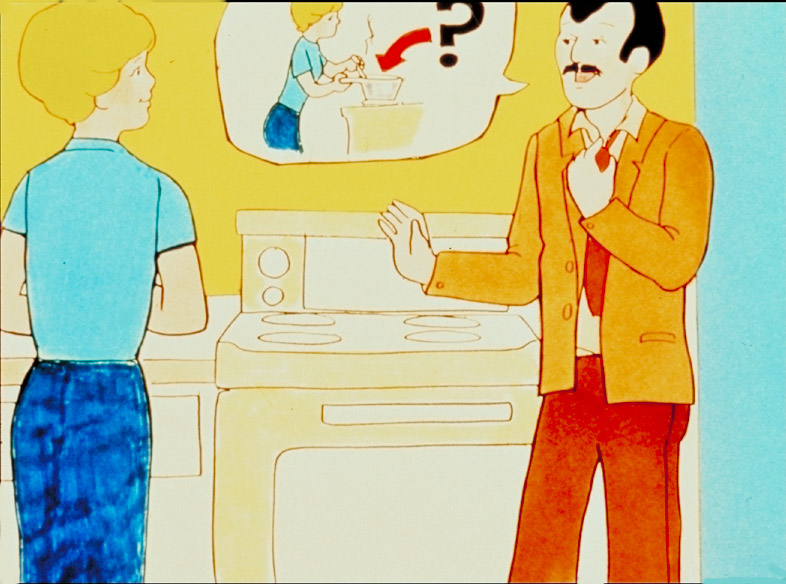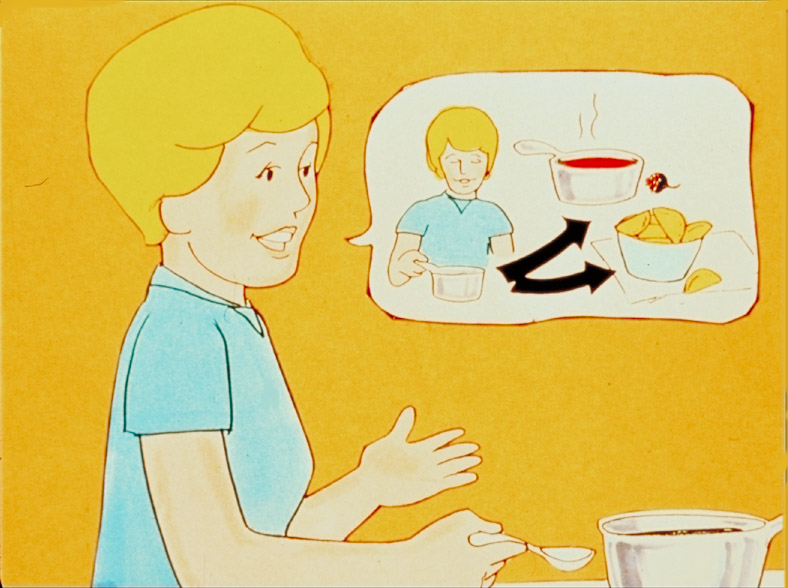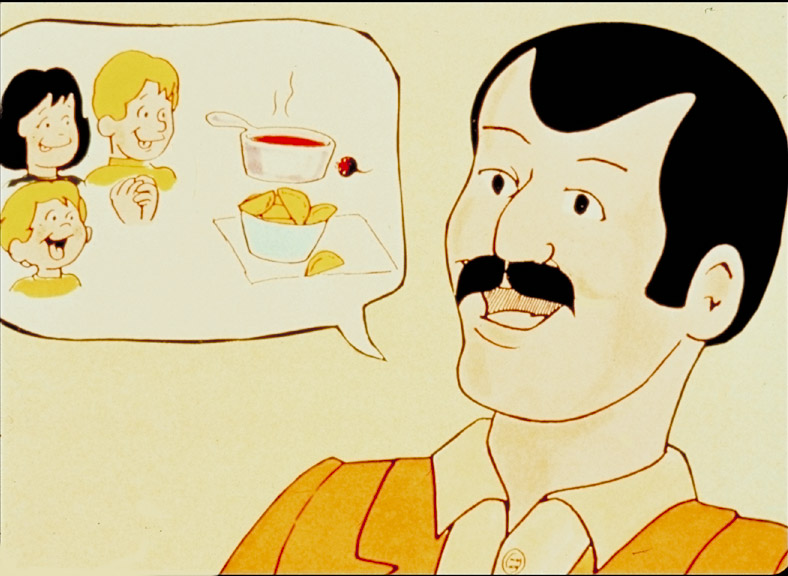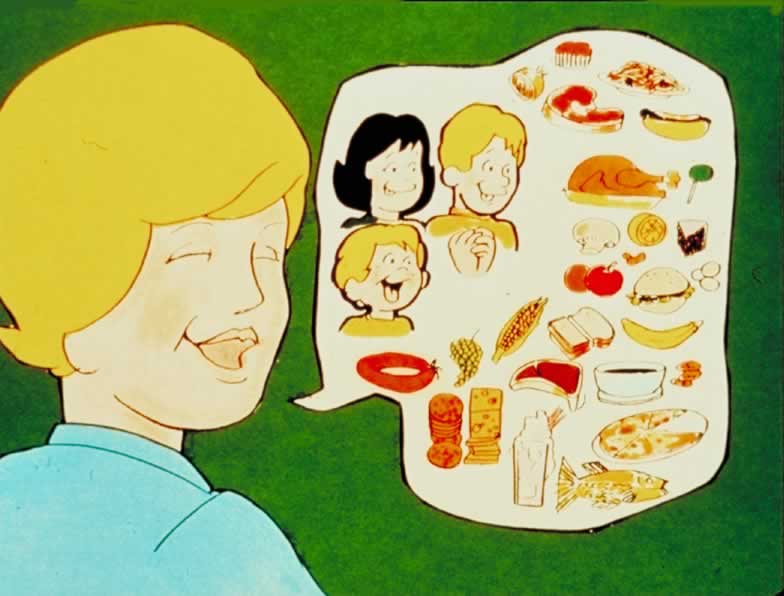
In Lesson 3 you will review previously learned verbs and you will also be introduced to some new verbs. You will also become familiar with a family of demonstrative pronouns and their usage in sentences. The lesson will contain the following information:
1. Verbs – in addition to reviewing several Group I є-ють, е-уть verbs, you will learn three new Group II ить–ять verbs.
2. Pronouns – in addition to one demonstrative pronoun це, you will learn that it has three ‘siblings’ ця, цей, ці.
|
Дієслова: І-а група
Verbs : Group I Conjugation
|
Review the following sentences which contain Group I є-ють verbs.
читати: У суботу мама часто читає журнали.
мати: Ти маєш квитки на концерт?
грати: Дівчата у Вінніпезі дуже добре грають у лакрос.
питати: Тату, треба питати, як їхати до Оттави!
слухати: Василю, чому ти не слухаєш вчительку?
Some of the Group I е-уть verbs to which you have been introduced are as follows:
іти (йти): З ким ви йдете додому, діти?
жити: Хто живе у столиці Канади?
писати: До кого вона хоче писати е-листи?
Several new verbs belonging to Group I were introduced in this Unit. All of them are associated with meal time. They are conjugated in the regular manner.
снідати – to have breakfast
обідати – to have lunch or dinner (the noon meal)
вечеряти – to have supper (the evening meal)
|
Дієслова: ІI-а група
Verbs : Group II Conjugation |
In this Unit, you are introduced to three verbs in the Group II ить – ять Conjugation: варити (to cook), любити (to like or to love), робити* (to do).
* Note - you are already familiar with the infinitive, but not with its conjugation.
варити: To conjugate this verb, drop the infinitive ending ити (not only ти) to form the stem of the verb вар and then add the verb endings.
| singular |
|
plural |
| |
|
|
| я вар + ю |
|
ми вар + имо |
|
ти вар + иш |
|
ви вар + ите |
|
він, вона, воно вар + ить |
|
вони вар + ять |
Listen to the audio clips which contain this verb.
 |
У тексті ми чуємо: |
| Добрий вечір! Що ти вариш на вечерю? |
 |
|
| Я варю борщ і вареники. |
 |
|
любити: as with the verb варити we drop the ending ити to form the stem of the verb люб and then we add the verb endings. However, with this verb the endings are slightly irregular – letter л is added in first person singular and third person plural:
| singular |
|
plural |
| |
|
|
| я люб + лю |
|
ми люб + имо |
| ти люб + иш |
|
ви люб + ите |
|
він, вона, воно люб + ить |
|
вони люб + лять |
Listen to the audio clips which contain this verb.
 |
У тексті ми чуємо: |
| Чудово! Діти також люблять борщ і вареники. |
 |
|
| Діти все люблять! |
 |
|
робити - as with the verb любити we drop the ending ити to form the stem of the verb роб and then we add the verb endings. With this verb the endings are also slightly irregular – the letter л is added in the first person singular and third person plural:
| singular |
|
plural |
| |
|
|
| я роб + лю |
|
ми роб + имо |
| ти роб + иш |
|
ви роб + ите |
| він, вона, воно роб + ить |
|
вони роб + лять |
I. Exercise 3.i
Study the picture and complete the questions. New words are: мавпи (monkeys), дерево (tree)
 |
| |
Товариші
Бомко, Фурчик, Жура й Чіча – мавпи. Вони – товариші. Мавпи живуть на дереві. Вони часто розмовляють, але сьогодні вони не розмовляють. Бомко відпочиває. Жура читає журнал. Фурчик хоче розмовляти, але Чіча не хоче розмовляти. Вона хоче їсти банан.
|
1. |
Хто вони? |
|
_________________________________________________________
|
2. |
Що робить Бомко? |
|
_________________________________________________________
|
3. |
Що робить Жура? |
|
_________________________________________________________
|
4. |
Що Чіча хоче робити? |
|
_________________________________________________________
|
5. |
Що Фурчик хоче робити? |
|
_________________________________________________________
|
6. |
Хто відпочиває? |
|
_________________________________________________________
|
7. |
Що Жура читає? |
|
_________________________________________________________
|
8. |
Де мавпи живуть? |
|
_________________________________________________________
|
9. |
Що Фурчик робить? |
|
_________________________________________________________
|
10. |
Чи товариші розмовляють сьогодні? |
|
_________________________________________________________
|
The Verb Їсти
Another verb that might be new to you is їсти (to eat). It belongs to the Group II Conjugation but it is an irregular verb, so at this time in the course you will only use its infinitive form. I. Exercise 3.ii
Complete the exercise, remembering the following rule:
auxiliary + infinitive verb = Знахідний відмінок
1. |
Мама хоче їсти ____________. |
5. |
Він хоче їсти ____________.
|
2. |
Хто хоче їсти ____________? |
6. |
А хто хоче їсти ____________?
|
3. |
Хлопці хочуть їсти __________. |
7. |
Мама хоче пити ____________.
|
4. |
Чи ви хочете їсти __________? |
8. |
Дід хоче їсти ____________.
|
XI. Exercise 3.iii
Complete the exercise, keeping in mind that both Group I and Group II Conjugation verbs appear.
1. |
варити |
Що діти __________________?
|
2. |
снідати |
Він хоче __________________.
|
3. |
любити |
Що ти __________________ їсти?
|
4. |
вечеряти |
Діти вже __________________.
|
5. |
варити |
Чи можна __________________ яйця?
|
6. |
обідати |
З ким ви __________________?
|
7. |
жити |
Ми __________________ в Саскатуні.
|
8. |
писати |
До кого ви __________________?
|
9. |
варити |
Сьогодні я __________________ м'ясо.
|
10. |
вечеряти |
Де ти __________________?
|
XI. Exercise 3.iv
Complete the exercise by supplying verbs in the appropriate forms.
1. |
2. |
3. |
4. |
5. |

|

|

|

|

|
|
|
|
|
|
6. |
7. |
8. |
9. |
10. |

|

|

|

|

|
1. |
Сьогодні Роман ______________________________.
|
2. |
Куди ти ______________________________?
|
3. |
Чи ви ______________________________?
|
4. |
Тепер я ______________________________.
|
5. |
Він багато ______________________________.
|
6. |
Дідусь ______________________________.
|
7. |
Ми ______________________________ листи.
|
8. |
У що вони ______________________________?
|
9. |
Вона любить ______________________________.
|
10. |
Дівчата ______________________________.
|
Several new demonstrative pronouns are introduced in this Unit. Study the chart given below, which provides a ‘visual organizer' for the various categories of pronouns learned thus far. 
Looking back to the previous lesson on nouns, you will recall the question: Якого кольору ....? This question asks about the color of an object.
Якого кольору банан? – Банан жовтий.
In English , a question which asks about a specific object ' s color uses the demonstrative pronoun ‘ this '. Note the example given:
What colour is this banana? This banana is yellow.
Якого кольору цей банан? Цей банан жовтий.
In the above example, the Ukrainian demonstrative pronoun це was adjusted to reflect the masculine noun банан. This is an important grammatical feature of Ukrainian which must be noted: Ukrainian words which describe nouns (such as colour adjectives and demonstrative pronouns) used in their singular form must agree with the gender of the noun.
In the case of the demonstrative pronoun ‘this', four forms are used:
цей - used with masculine nouns
ця - used with feminine nouns
це - used with neuter nouns
ці - used with all plural nouns (not gender specific)
In the examples below, none that the pronoun takes the gender of the noun.
Якого кольору цей банан? Цей банан жовтий.
Якого кольору ця грушка? – Ця грушка зелена.
Якого кольору це молоко? – Це молоко біле.
Якого кольору ці банани? - Ці банани жовті.
Note This Context!
If the demonstrative pronoun does not modify a noun, but is used state a fact as the subject of the sentence, it remains in the neuter form. Please recall that in Ukrainian, the verb є (is, are) is understood in the sentence, so you must study the context of a sentence in order to determine the role of the demonstrative pronoun. Examples of this rule are given:
This is an apple. Це яблуко.
This is cheese. Це сир.
This is sausage. Цe ковбаса.
These are strawberries. Цe суниці.
XI. Exercise 3.v
Answer the following questions, keeping in mind that the adjective and demonstrative pronoun must agree with the gender of the noun.
|
|
1. Якого кольору це морозиво?
________________________________________________________________ |
|
|
2. А якого кольору це морозиво?
________________________________________________________________ |
|
|
3. Якого кольору цей горох?
________________________________________________________________ |
|
|
4. Якого кольору ця риба?
________________________________________________________________ |
|
|
5. Якого кольору цей виноград?
________________________________________________________________ |
|
|
6. А якого кольору цей виноград?
________________________________________________________________ |
|
|
7. Якого кольору ці яйця?
________________________________________________________________ |
|
|
8. А якого кольору ці яйця?
________________________________________________________________ |
The Pronoun усе(все)
The word усе (все) is introduced in the Unit dialogue. It is used here as a pronoun* in its neuter form and means ‘everything'.
 |
У тексті ми чуємо: |
| Діти все люблять. |
 |
|
*This word can also be an adverb of time, meaning always. It is important to understand the context in which the word is being used in a sentence.
|



































